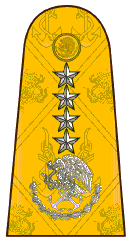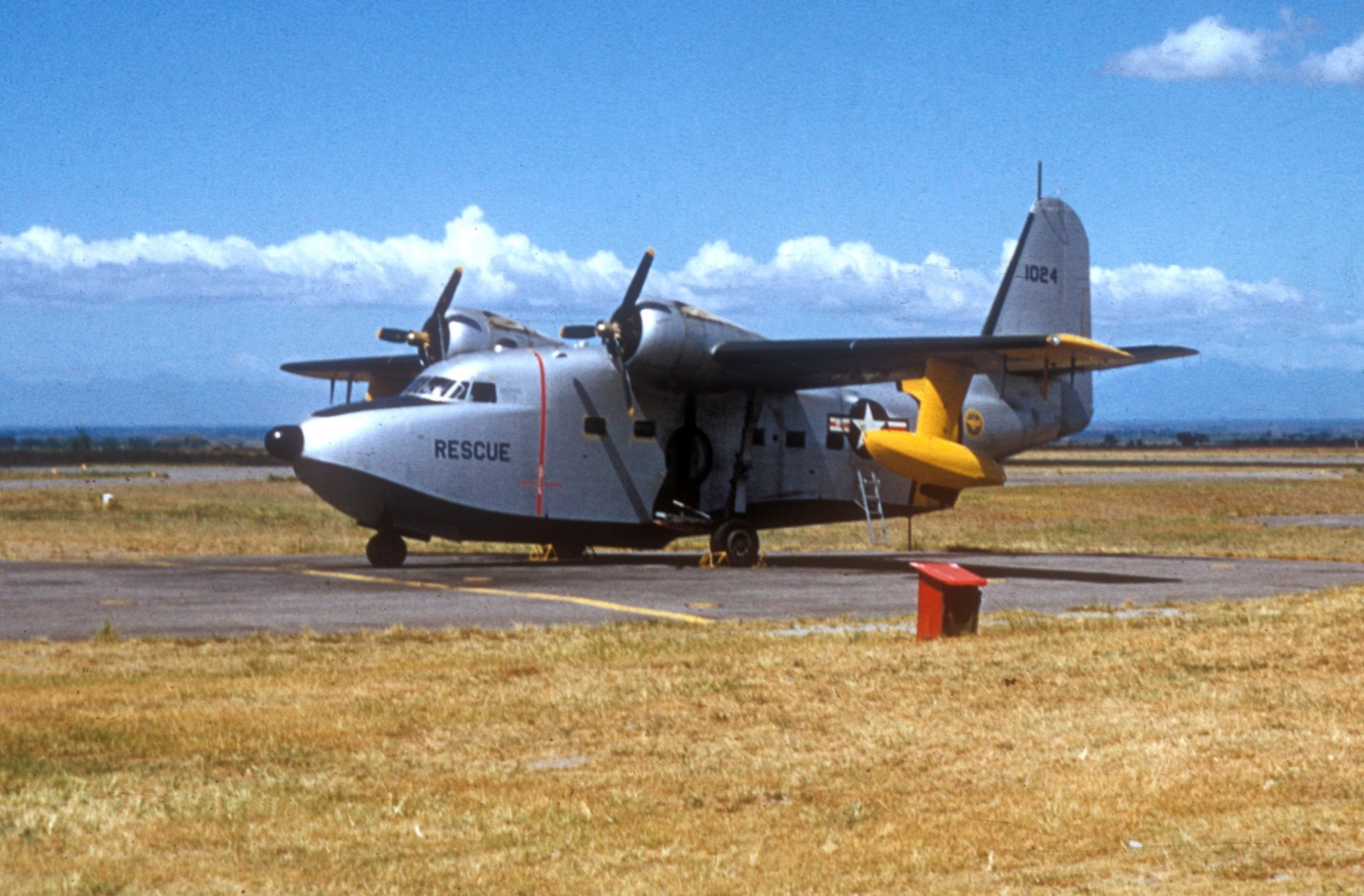|
DGRCN Tonatiuh MX-1
The Tonatiuh MX-1 was a lightweight, high-wing monoplane built by the Secretariat of the Navy of Mexico in collaboration with the Instituto Politécnico Nacional (National Polytechnic Institute). Design and development The project began in 1977 when a group of engineers from the IPN reconstructed a Piper PA-18, after several discussions it was decided that it was better to design an own aircraft which was initially called Project CIAAC 7701. The design and calculation works were done under the name of TONATIUH Project in the offices of the General Directorate of Repairs and Naval Construction. Engineer César Trujillo was appointed by the Secretariat of the Navy to advice on the construction of the first prototype, beginning work in 1978 at the Aeronaval Station of the Mexico City International Airport. The Tonatiuh MX-1 bases its design almost entirely on the Bárcenas B-01 agricultural aircraft, since it shares components and design such as the wing profile, beams, ribs a ... [...More Info...] [...Related Items...] OR: [Wikipedia] [Google] [Baidu] |
Utility Aircraft
A utility aircraft is a general-purpose light aircraft, light airplane or helicopter, usually used for transporting people, freight or other supplies, but is also used for other duties when more specialized aircraft are not required or available. The term can also refer to an aircraft type certificated under American, Canadian, European or Australian regulations as a ''Utility Category Aircraft'', which indicates that it is permitted to conduct limited aerobatics. The approved maneuvers include chandelles, Aerobatic maneuver, lazy eights, Spin (aerodynamics), spins and Steep turn (aviation), steep turns over 60° of bank.Crane, Dale: ''Dictionary of Aeronautical Terms, third edition'', page 535. Aviation Supplies & Academics, 1997. In the United States, military utility aircraft are given the prefix U in their United States Department of Defense aerospace vehicle designation, designations. See also * Federal Aviation Regulations#Part 23, FAR Part 23 (refers to "utility category ... [...More Info...] [...Related Items...] OR: [Wikipedia] [Google] [Baidu] |
Trainer Aircraft
A trainer is a class of aircraft designed specifically to facilitate flight training of pilots and aircrews. The use of a dedicated trainer aircraft with additional safety features—such as tandem flight controls, forgiving flight characteristics and a simplified cockpit arrangement—allows pilots-in-training to safely advance their skills in a more forgiving aircraft. Civilian pilots are normally trained in a light aircraft, with two or more seats to allow for a student and instructor. Tandem and side by side The two seating configurations for trainer aircraft are: pilot and instructor side by side, or in tandem, usually with the pilot in front and the instructor behind. The side-by-side seating configuration has the advantage that pilot and instructor can see each other's actions, allowing the pilot to learn from the instructor and the instructor to correct the student pilot. The tandem configuration has the advantage of being closer to the normal working environment that ... [...More Info...] [...Related Items...] OR: [Wikipedia] [Google] [Baidu] |
Reconnaissance Aircraft
A reconnaissance aircraft (colloquially, a spy plane) is a military aircraft designed or adapted to perform aerial reconnaissance with roles including collection of imagery intelligence (including using photography), signals intelligence, as well as measurement and signature intelligence. Modern technology has also enabled some aircraft and UAVs to carry out real-time surveillance in addition to general intelligence gathering. Before the development of devices such as radar, military forces relied on reconnaissance aircraft for visual observation and scouting of enemy movement. An example is the PBY Catalina maritime patrol flying boat used by the Allies in World War II: a flight of U.S. Navy Catalinas spotted part of the Japanese fleet approaching Midway Island, beginning the Battle of Midway. History Prior to the 20th century machines for powered and controllable flight were not available to military forces, but some attempts were made to use lighter than air craft ... [...More Info...] [...Related Items...] OR: [Wikipedia] [Google] [Baidu] |
Bárcenas B-01
The Bárcenas B-01 is a low-wing monoplane agricultural aircraft built by Aeroservicio Bárcenas S.A. Development Aeroservicio Bárcenas began operating as repair and maintenance workshops for aircraft at Uruapan Airport in the early 60's, then, in the early 70's began designing and developing an agricultural aircraft whose first flight was made on June 8, 1973 and was certified by the DGAC on November 30 of the same year. The aircraft had an alar profile called "Bárcenas airfoil", which allowed it better support and control than its competitors at that time, the design of that wing profile was later used by the National Polytechnic Institute and the Navy of Mexico in the design and assembly of the Tonatiuh MX-1 aircraft, which was used by Mexican Naval Aviation as an observation and reconnaissance aircraft. In December 1978, the General Directorate of Civil Aeronautics published the results of a study titled Agricultural Aircraft and its Construction, in which the Colle ... [...More Info...] [...Related Items...] OR: [Wikipedia] [Google] [Baidu] |
Wing Configuration
The wing configuration of a fixed-wing aircraft (including both glider (aircraft), gliders and powered aeroplanes) is its arrangement of lifting and related surfaces. Aircraft designs are often classified by their wing configuration. For example, the Supermarine Spitfire is a conventional low wing cantilever monoplane of straight elliptical planform with moderate aspect ratio and slight dihedral. Many variations have been tried. Sometimes the distinction between them is blurred, for example the wings of many modern combat aircraft may be described either as cropped compound deltas with (forwards or backwards) swept trailing edge, or as sharply tapered swept wings with large leading edge root extensions (or LERX). Some are therefore duplicated here under more than one heading. This is particularly so for variable geometry and combined (closed) wing types. Most of the configurations described here have flown (if only very briefly) on full-size aircraft. A few theoretical designs ... [...More Info...] [...Related Items...] OR: [Wikipedia] [Google] [Baidu] |
Secretariat Of The Navy
The Mexican Secretary of the Navy ( es, Secretaría de Marina, ''SEMAR'') is a member of the federal executive cabinet as well as the highest-ranking Mexican naval officer with the responsibility of commanding the Mexican Navy (including the Mexican Naval Infantry or ‘marines,’ as well as the Mexican merchant marine service ) and managing the Secretariat of the Navy (the naval ministry and naval civil service). The secretary is appointed by the President of the Republic.http://www.semar.gob.mx/ *Organizes, administers and prepares the Navy. *Exercising sovereignty in territorial seas, its air space and Mexico's coasts. Functions Based on article 30 of the Organic Law of the Federal Public Administration, among other actions the Secretariat is mandated to: * Organize and administer the affairs of the Mexican Navy * Manage the assets and reserves of the Navy in all its aspects * Grant licenses and withdrawals, and intervene in the pensions of Navy service personnel * Exe ... [...More Info...] [...Related Items...] OR: [Wikipedia] [Google] [Baidu] |
Instituto Politécnico Nacional
The National Polytechnic Institute of Mexico ( es, Instituto Politécnico Nacional de México; ), abbreviated IPN, is one of the largest public universities in Mexico with 171,581 students at the high school, undergraduate and postgraduate levels. It is the second-best university in Mexico in the technical and engineering domain according to the QS World University Rankings by Subject 2018. It was founded on 1 January 1936 during the administration of President Lázaro Cárdenas del Río. The institute consists of 98 academic units offering 293 courses of study. It includes 78 technical careers, 80 undergraduate and 135 postgraduate programs. Its main campus, called 'Unidad Profesional Adolfo López Mateos' or 'Zacatenco', located in northern Mexico City, covers approximately . The IPN is based primarily in Mexico City, but with several research institutes and facilities distributed over 22 states. History The institute was founded on January 1, 1936, during the administr ... [...More Info...] [...Related Items...] OR: [Wikipedia] [Google] [Baidu] |
Piper PA-18
The Piper PA-18 Super Cub is a two-seat, single-engine monoplane. Introduced in 1949 by Piper Aircraft, it was developed from the PA-11 Cub Special, and traces its lineage back through the J-3 Cub to the Taylor E-2 Cub of the 1930s. In close to 40 years of production, over 10,000 were built. Super Cubs are commonly found in roles such as bush flying, banner towing and glider towing. Design and development While based on the design of the earlier Cubs, the addition of an electrical system, flaps (3 notches), and a considerably more powerful engine (150 hp), made it a very different flying experience. Although the "standard" Super Cub was fitted with a 150-horsepower (112 kW) Lycoming engine, it is not uncommon to see them equipped with a 160-horsepower O-320-B2B, or even 180 horsepower (134 kW) Lycoming O-360 powerplant. The high-lift wing and powerful engine made the Super Cub a prime candidate for conversion to either floatplane or skiplane. In addition, t ... [...More Info...] [...Related Items...] OR: [Wikipedia] [Google] [Baidu] |
Mexico City International Airport
Mexico City International Airport ( es, link=yes, Aeropuerto Internacional de la Ciudad de México, AICM); officially ''Aeropuerto Internacional Benito Juárez'' (Benito Juárez International Airport) is the main international airport serving Greater Mexico City, since 2022 together with the Felipe Ángeles International Airport ("AIFA") and Toluca International Airport. It is Mexico's and Latin America's busiest airport by passenger traffic and aircraft movements, and the 16th busiest in the world. The airport sustains 35,000 jobs directly and around 15,000 indirectly in the immediate area. The airport is owned by Grupo Aeroportuario de la Ciudad de México and operated by Aeropuertos y Servicios Auxiliares, the government-owned corporation, which also operates 22 other airports throughout Mexico. This airport is served by 30 domestic and international passenger airlines and 17 cargo carriers. As the main hub for Mexico's largest airline Aeroméxico (with Aeroméxico Connect) ... [...More Info...] [...Related Items...] OR: [Wikipedia] [Google] [Baidu] |
Veracruz International Airport
General Heriberto Jara International Airport or Veracruz International Airport is an international airport located in Veracruz, Mexico. It handles national and international air traffic. Expansion and renovation works The airport has been recently renovated and expanded in order to meet the growing demand. Some improvements have been added, such as the construction of new hallways inside the terminal to accommodate a larger number of passengers, so that the airport can handle the operations of larger aircraft, such as the Boeing 757. The terminal exterior and interior have also been renovated, with a completely new architectural style. General Information In 2020, the airport handled 721,159 passengers, and 1,103,460 in 2021. The airport is located at the outskirts of the city of Veracruz, in a place known as "Las Bajadas". The airport is named after General Heriberto Jara Corona, once Governor of Veracruz, from 1924 to 1927. Facilities * Number of gates: 11 * Conta ... [...More Info...] [...Related Items...] OR: [Wikipedia] [Google] [Baidu] |
Beechcraft Bonanza
The Beechcraft Bonanza is an American general aviation aircraft introduced in 1947 by Beech Aircraft Corporation of Wichita, Kansas. The six-seater, single-engined aircraft is still being produced by Beechcraft and has been in continuous production longer than any other aircraft in history. More than 17,000 Bonanzas of all variants have been built, produced in both distinctive V-tail and conventional tail configurations; early conventional-tail versions were marketed as the Debonair. Design and development At the end of World War II, two all-metal light aircraft emerged, the Model 35 Bonanza and the Cessna 195, that represented very different approaches to the premium end of the postwar civil-aviation market. With its high-wing, seven-cylinder radial engine, fixed tailwheel undercarriage, and roll-down side windows, the Cessna 195 was a continuation of prewar technology. The Bonanza, however, featured an easier-to-manage, horizontally opposed, six-cylinder engine, retractabl ... [...More Info...] [...Related Items...] OR: [Wikipedia] [Google] [Baidu] |
Grumman HU-16 Albatross
The Grumman HU-16 Albatross is a large, twin–radial engined amphibious aircraft, amphibious seaplane that was used by the United States Air Force (USAF), the U.S. Navy (USN), and the U.S. Coast Guard (USCG), primarily as a search and rescue (SAR) aircraft. Originally designated as the SA-16 for the USAF and the JR2F-1 and UF-1 for the USN and USCG, it was redesignated as the HU-16 in 1962. A new build G-111T Albatross with modern avionics and engines was proposed in 2021 with production in Australia to commence in 2025. Design and development An improvement of the design of the Grumman Mallard, the Albatross was developed to land in open-ocean situations to accomplish rescues. Its deep-V hull cross-section and keel length enable it to land in the open sea. The Albatross was designed for optimal seas, and could land in more severe conditions, but required JATO (jet-assisted takeoff, or simply booster rockets) for takeoff in seas or greater. Operational history Most Albatros ... [...More Info...] [...Related Items...] OR: [Wikipedia] [Google] [Baidu] |
.jpg)

.jpg)




.jpg)
.jpg)

